A total of 39,508 fatal motor vehicle crashes occurred in the United States in 2021, resulting in 42,939 fatalities, according to the National Highway Traffic Safety Administration. Of those, nearly one-third involved speeding—and more than half of those speeding fatalities occurred when the driver was not wearing a seatbelt, a safety practice the NHTSA estimates reduces front-seat fatalities by 45% and moderate to critical injuries by 50%.
But while these types of general statistics are indicative of certain overarching driver behaviors, it is important to remember that not all vehicle fatalities occur in the same environment.
The United States has the largest road network in the world at about 4.1 million miles (or 6.6 million kilometers—a figure that might be a bit of an underestimate considering official estimates were last updated in 2012. American drivers encounter a wide variety of traffic and road conditions in their daily activities, from local rural roads to major multilane interstate highways. All types of roads are broken down into functional classifications, but in general terms, larger and more heavily used roadways see higher rates of fatal car accidents, while speeding contributes more heavily to fatal accidents on local roads.
To give a clearer sense of driving risks across distinct environments, CheapInsurance.com cited data from the National Highway Traffic Safety Administration to calculate fatality rates from car accidents on different types of roadways. Data is for 2021 and calculated relative to vehicle-miles traveled during that year; the data also parses out those fatalities resulting from accidents involving speeding.
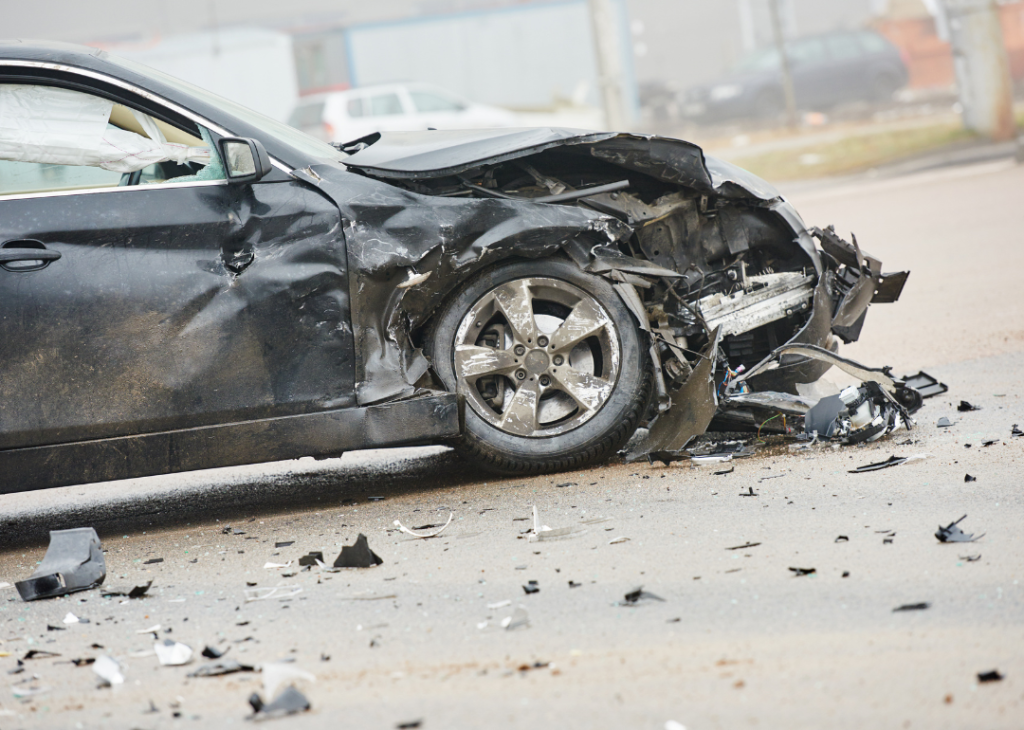
Interstate, principal arterial
– Typical speed limit: Between 55 and 75 mph
– Fatalities per 100 million vehicle-miles traveled, 2021: 0.62 (5,027 fatalities)
– Fatalities involving speeding: 1,430 fatalities, 28.4% of total
Interstate roadways that cross state lines are funded and maintained by the U.S. Department of Transportation—which is to say by the federal government, as opposed to DOTs in the respective states they pass through. “Principal arterial” roads generally refer to heavily used highways that see higher speeds because they stretch for longer distances.
The Interstate Highway System grew out of the Federal-Aid Highway Act of 1956. One of President Dwight D. Eisenhower’s crowning achievements, the IHS has in subsequent decades continued to expand. According to nonprofit organization TRIP, the IHS, while comprising only 3% of the nation’s roadways, handles around 26% of all national vehicular traffic. What’s more, between 1956 and 2019, just prior to the onset of the pandemic, vehicle-miles traveled on the interstate system have grown by 427% to reach 3.3 trillion miles driven.
In more recent years, the IHS has undergone a sociopolitical reevaluation for the ways in which the initiative disproportionately impacted Black communities through the use of eminent domain. In terms of driving safety, interstates have over time evolved to implement measures that, as of 2019, save an estimated 6,555 lives annually, according to TRIP. These measures include a minimum of four lanes, distance from other roads and train tracks, more gradual curves, median barriers, and rumble strips, which alert drivers when they’re leaving the roadway and need to course-correct.
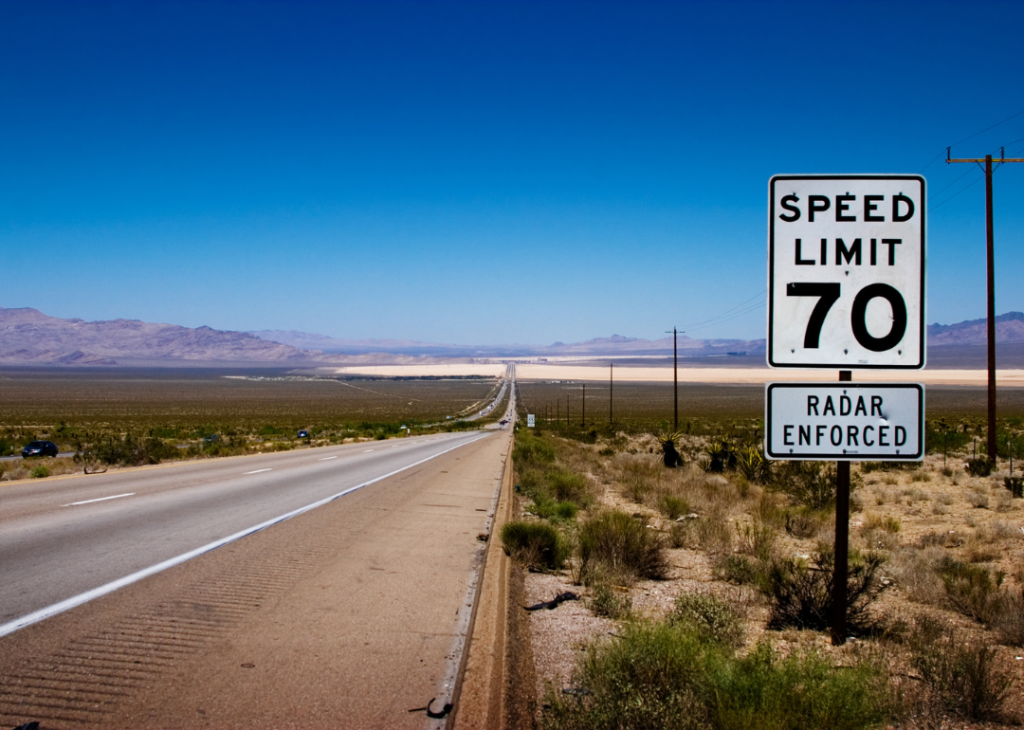
Freeway and expressway, principal arterial
– Typical speed limit: Between 50 and 70 mph
– Fatalities per 100 million vehicle-miles traveled, 2021: 0.64 (1,801 fatalities)
– Fatalities involving speeding: 540 fatalities, 30.0% of total
Part of the principal arterial classification, which defines fast-moving and high-volume road types, freeways and expressways primarily provide travel corridors between urban areas. More particularly, they are divided highways with control-of-access, meaning that automobile inlets and outlets are regulated to encourage uninterrupted traffic flow.
Freeways are only accessible through on- and off-ramps and can have up to eight lanes, while expressways have more mixed access. The regulation of access points goes a long way in simplifying traffic patterns, resulting in less complex merging, and deceleration and acceleration points when engineered correctly. According to the Department of Transportation, among the wide array of safety measures that can benefit freeway and expressway travel, the use of cable barriers versus concrete barriers to better deflect impacts and roundabouts at freeway interchanges are two methods to increase the safety of such roadways.
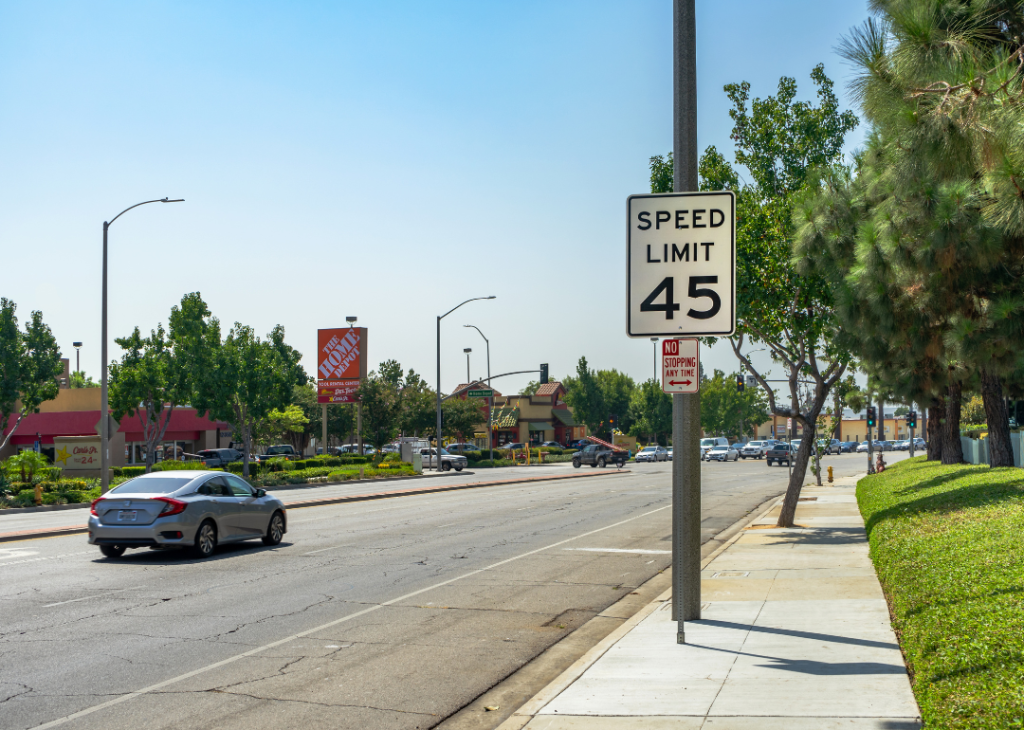
Collector
– Typical speed limit: Between 35 and 55 mph
– Fatalities per 100 million vehicle-miles traveled, 2021: 0.84 (7,634 fatalities)
– Fatalities involving speeding: 2,342 fatalities, 30.7% of total
A collector is a low- to moderate-capacity roadway on which travel distances tend to be shorter and which channels traffic onto major arterial roads. In rural environments, collector roads service intercounty travel, ferrying drivers from residential areas to gathering points such as a county seat, school, or park. In urban environments, they serve as connectors between residential, commercial, and industrial areas, often spanning into densely residential zones.
Collectors also accommodate pedestrian and bicycle traffic and incorporate parking, resulting in a dense web of uses that can encourage dangerous overlap. Municipalities often deploy a variety of safety and “traffic calming” measures to slow and control the movements of motorists, which include the use of roundabouts, speed bumps, raised crosswalks, high-visibility signage, and sidewalk bulb-outs.
FIND THE CHEAPEST SR-22 CAR INSURANCE
Find the cheapest SR-22 coverage plan that’s reliable, easy to set up, and will help safeguard your driving privileges with proof of financial responsibility.
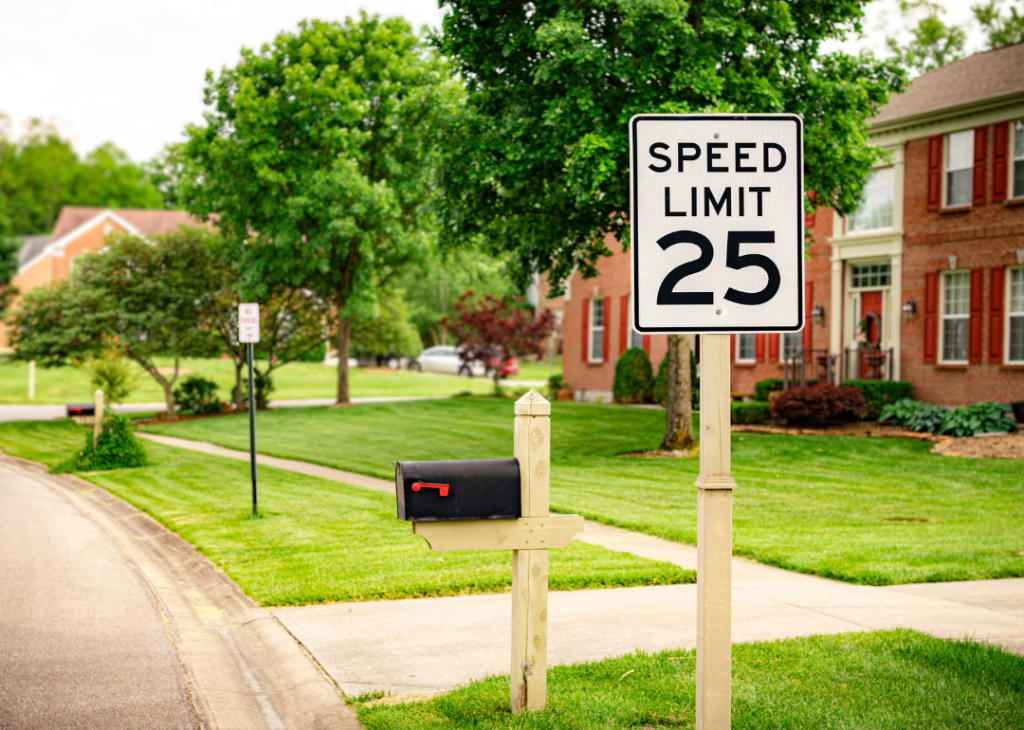
Local
– Typical speed limit: Between 20 and 45 mph
– Fatalities per 100 million vehicle-miles traveled, 2021: 1.05 (4,398 fatalities)
– Fatalities involving speeding: 1,536 fatalities, 34.9% of total
Local roads service primarily residential areas and, like collectors, generally accommodate shorter travel distances. In both urban and rural contexts, local roads connect homes to local cafes, stores, farms, and other local land. Particularly in rural spaces, they are in part a grab-bag category capturing all roads not defined as arterial or collector, and in urban environments provide public access to cities across a wide variety of contexts.
As reported in The New York Times, local roads can be a particularly dangerous region where pedestrians, motorists, and cyclists overlap. Locals are the road type on which the most fatal speeding accidents occur. Safety measures encouraged by the Department of Transportation include bicycle lanes, pedestrian refuges in medians, enhanced crosswalk visibility, and variable speed limits.
ACCESS AFFORDABLE CAR INSURANCE
Let us help you find cheap car insurance with top-rated insurers and immediate quotes at the best possible rate.
Minor arterial
– Typical speed limit: Between 50 and 70 mph
– Fatalities per 100 million vehicle-miles traveled, 2021: 1.63 (8,777 fatalities)
– Fatalities involving speeding: 2,389 fatalities, 27.2% of total
Minor arterial roads serve to augment major arterial roadways and are built to accommodate moderate travel distances, high speeds, and low interruption to traffic flow. In a rural system, they form linkages between cities, towns, and other major gathering points, crossing counties and states as needed. Minor arterial roads in urban areas mainly provide intercommunity connections and are ideally distributed at least 1 mile apart to enable better access to principal arterials.
As these roadways serve distinct purposes in their use environments, safety measures vary. An urban minor arterial might add a bike lane between a sidewalk and the road to separate use regions, while a rural minor arterial might add a mid-block raised crosswalk as a traffic-calming measure.
EXPLORE CHEAP MOTORCYCLE INSURANCE OPTIONS
Save time and money while shopping for cheap motorcycle insurance that still provides comprehensive coverage in the event of an accident.
Principal arterial, other
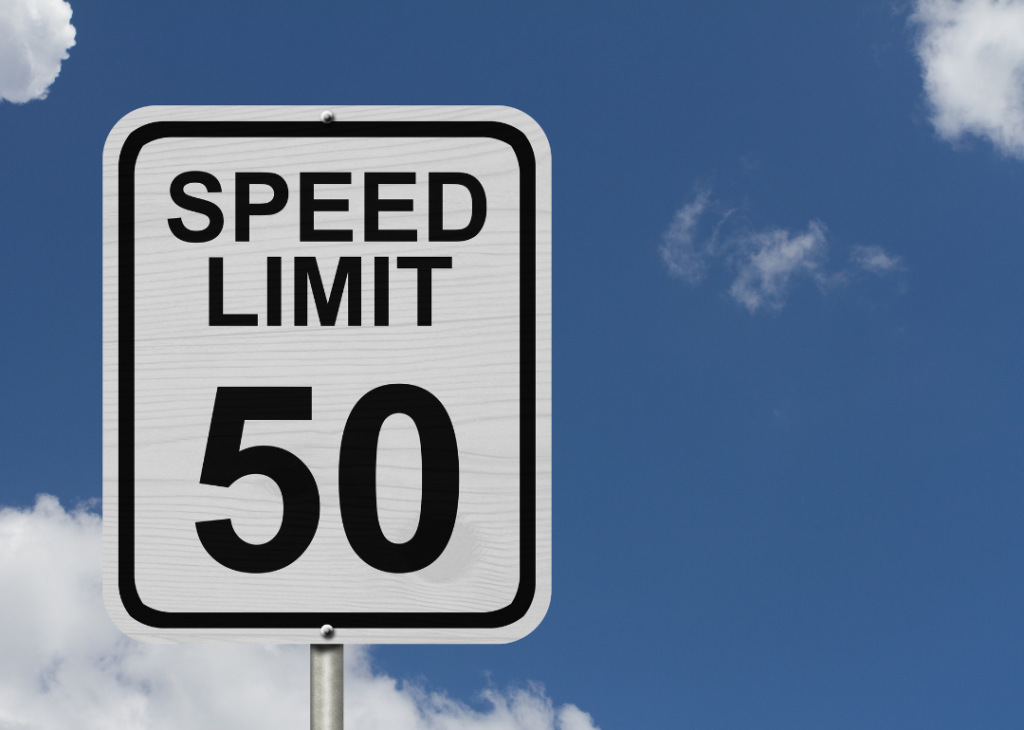
– Typical speed limit: Between 50 and 70 mph
– Fatalities per 100 million vehicle-miles traveled, 2021: 1.76 (11,634 fatalities)
– Fatalities involving speeding: 2,761 fatalities, 23.7% of total
This category of principal arterial roadways is a grab bag that captures all major, high-volume, long-distance, high-speed roadways that are not specifically classified as part of the interstate system. Principal arterials provide major routes into and out of urban areas, while in rural settings, they encompass statewide and occasionally cross-state major roadways. One particular characteristic of these roadways in urban settings is a lack of control-of-access, meaning they have irregularly interrupted traffic flow, likely explaining the high rate of vehicle fatalities.
Moreover, as explained by the Columbia University Mailman School of Public Health, principal arterial roadways are disproportionately constructed in communities of color and low-income neighborhoods, which unequally distributes the impact of these dangerous roads to those communities. According to a study from the National Library of Medicine, some safety and health-focused measures that agencies and municipalities can take include improving stoplight signal coordination, electronic tolling, and installing raised crosswalks to increase pedestrian safety.
Data reporting by Emma Rubin. Story editing by Brian Budzynski. Copy editing by Tim Bruns. Photo selection by Abigail Renaud.


